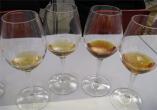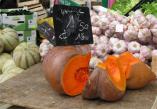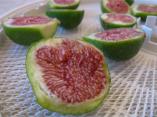A sweet little article about whether the body’s seasonal health needs can be satisfied by eating seasonal foods is a timely one, in light of a couple of recent stories about risks to kidneys and livers by things we must have known we shouldn’t be eating. It’s not completely helpful to those of us above the citrus growing belt – article observes that colds and flu coincide with citrus and kiwi harvest – but it’s a nice idea. (Though winter vegetables like broccoli and squash do contain vitamin C as well) And the bottom line is that eating fresh vegetables and fruits is always the best way to go.
Because processed foods are getting more and more bad press. High Fructose Corn Syrup (HFCS – or by its additive names, dextrose, glucose-fructose, fructose-glucose or isoglucose) was rumbled by Michael Pollan and many others for its role in increasing the heft of its consumers. Now, in addition to its contribution to obesity levels, it has been identified as damaging to human livers in people who already have liver disease.
Avoiding HFCS is difficult, if you buy processed foods, because it has been embraced by food processors for its cheapness (thank you US farm subsidies), and can be found in foods including (but not limited to) soft drinks, fruit drinks, sports drinks, flavoured yogurts, frozen dinners, frozen desserts, canned food, breads, muffins, cakes, stuffing mixes, breakfast cereals, pancakes, waffles, cookies, crackers, ice cream, children’s vitamins, cough syrup, candy bars, ketchup, relish, mustard, barbecue sauce, drink mixes, jams, jellies, syrups, meats, salad dressings, sauces, marinades and snack foods and chocolate bars.
Assuming you successfully dodge products containing HFCS, you can now start trying anew to avoid genetically modified foods, because there is evidence that GM crops are harmful to kidneys and livers. Indeed, this has only been proven in animal tests, but who wants to be the human lab rat?
Kidney disease is of course linked to obesity (see HFCS, above). Then again, it might be pure coincidence, but the rise in kidney disease over the past ten years coincides pretty neatly with the increase in unlabelled GM food ingredients (found in about 60% of our processed foods nowadays, according to a 2004 CBC article) like corn, canola, dairy, soy, potatoes, rice and now sugar beet products into North American diets: worth a bit of independent study, I’d think. We know already that Health Canada does not require independent testing on GM food safety for human consumption, but relies on the studies that the producers choose to release.
So. You know what to do. Get your copy of Michael Pollan’s Food Rules, consult your GE-free shopping guides and a good basic cookbook, and get thy processed foods behind thee.
BTW: was I the only one who found the beverages consumed in the movie Juno disturbing, particularly when the consumer was pregnant? Without wanting to know what was in the blue liquid whose surplus the character disposed of at various points, the ingredients in the jug of what she drank before her pregnancy test (amounting to 1539 calories, by the way) are:
Water, High Fructose Corn Syrup and 2% or Less of Each of the Following: Concentrated Juices (Orange, Tangerine, Apple, Lime, Grapefruit). Citric Acid, Ascorbic Acid (Vitamin C), Beta-Carotene, Thiamin Hydrochloride (Vitamin B1), Natural Flavors, Food Starch-Modified, Canola Oil, Cellulose Gum, Xanthan Gum, Sodium Hexametaphosphate, Sodium Benzoate To Protect Flavor, Yellow #5, Yellow #6.









